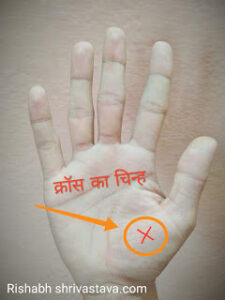In palmistry which hand is read for a woman
Palmistry, also known as chiromancy, is an ancient practice of interpreting the lines, shapes, and features of a person’s hands to gain insights into their personality, potential life events, and characteristics. In this art, the left and right hands hold different significance depending on whether the person is male or female. When it comes to reading a woman’s hand, traditionally, the right hand is considered the dominant hand for analysis. However, it’s important to note that interpretations can vary among different palmists and cultures.

Palmistry has been practiced for centuries in various cultures around the world, including in ancient China, India, Egypt, and Greece. Its roots are deeply intertwined with cultural beliefs, folklore, and superstitions. While there is no scientific evidence to support the accuracy of palmistry, it continues to intrigue and captivate many due to its mystique and the desire to gain self-awareness and insight into the future.
In palmistry, the right hand is generally considered the active or dominant hand, while the left hand is seen as the passive or receptive hand. This distinction is often attributed to the concept of yin and yang, with the right hand symbolizing active energy and the left hand representing receptive energy. For a woman, the right hand is often read as it reflects her conscious actions, choices, and life events.
The lines on the hand, including the heart line, head line, life line, and fate line, are among the primary features that palmists analyze. Each line is believed to represent different aspects of a person’s life and personality.

1. Heart Line: This line is associated with matters of the heart, emotions, and relationships. It reflects a woman’s emotional nature, her approach to love, and her ability to form and maintain connections.
2. Head Line: The head line is linked to intellectual pursuits, decision-making, and thought processes. It offers insights into a woman’s cognitive abilities, problem-solving skills, and the way she approaches challenges.
3. Life Line: Contrary to popular belief, the life line does not predict the length of one’s life. Instead, it signifies a person’s vitality, health, and major life events. It can give indications about a woman’s overall well-being and the potential challenges she may face.
4. Fate Line: The fate line, if present, is connected to a person’s life path, career, and destiny. It can reveal a woman’s ambitions, professional trajectory, and significant life changes related to her work.
5. Mounts: In addition to lines, the mounts (raised areas of flesh on the palm) are also analyzed. Each mount is associated with a specific planet and represents different qualities or attributes. For instance, the Mount of Venus is linked to matters of love and relationships, while the Mount of Jupiter is associated with ambition and leadership.
While some individuals firmly believe in the insights provided by palmistry, others view it as purely a form of entertainment. Interpretations can vary greatly among different palmists, and there is no standardized system for analyzing hands.
Furthermore, the practice of palmistry has evolved over time, and contemporary palmists may incorporate additional elements such as finger shapes, nail characteristics, and skin texture into their analyses. As the art has been passed down through generations, different schools of thought and interpretations have emerged, contributing to the diversity of palmistry practices today.
In conclusion, while palmistry suggests that the right hand is read for a woman, it’s important to approach this practice with a balanced perspective. While some aspects of palmistry may resonate with individuals, it’s not a science and should not be used as a sole basis for making important life decisions. Instead, consider it a fascinating exploration of symbolism and personal reflection, appreciating the cultural and historical significance that palmistry holds in various societies.
